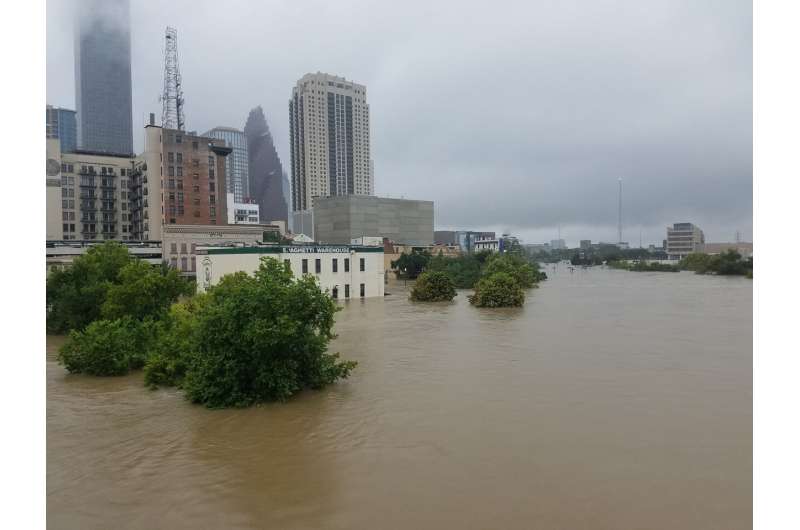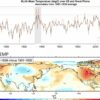An unnoticed network of channels is cutting across the coastal plain landscape along the Gulf Coast and influencing how water flows, according to research from The University of Texas at Austin that could help predict flooding from major storms in the future.
The coastal plains are relatively flat, which has kept most research on flood risk and water flow focused on large rivers in the region. But the new research led by scientists with UT Austin and the Water Institute of the Gulf revealed that although the surface elevation is steady, the landscape is covered in narrow but deep channels that play an important role in moving water.
“Typically, flood risk has been characterized in Texas and Louisiana based on how close you are to a river,” said the study’s lead author, John Swartz, who started the research as a doctoral student at the UT Jackson School of Geosciences and is now a research scientist at the Water Institute of the Gulf. “But we see through things like Hurricane Harvey that what is happening to the broader landscape when there is a lot of water present is really important.”
The research is published in the journal Nature Geoscience.
Scientists said that understanding the specifics of how the channels move water—especially during floods—in different areas will require more research, and ultimately the findings will need to be incorporated in national and regional flood models.
Channels on their own are not an uncommon sight along the coastal plain. However, researchers were able to show the full extent of the branching networks they form by creating a high-resolution elevation map spanning the Gulf Coast from Texas to Mississippi.

Houston flooding during Hurricane Harvey. The city is located on the coastal plain, where the study revealed a broad network of channels that can influence where water goes when it floods. © World Meteorological Organization / Tom Fitzpatrick
The data for the map came from state and federal agencies—including the Texas General Land Office Natural Resources Information Service, the U.S. Geological Survey and the Federal Emergency Management Agency—which collected the information over the years for local and regional use.
As it became public, Swartz and his collaborators used the chance to piece it together and get the most comprehensive and detailed look yet at coastal plain topography.
The map captured every three meters of the coastal plain and measured elevation changes within a few centimeters. At this scale, a complex array of channel networks emerged.
The channel networks covered more than 12,000 square miles, or about one-third of the study region, and were separated into more than 40 distinct drainage basins. The depth of these basins can be as large as 22-32 feet, which is comparable to the depths of the larger rivers in the area.
“The surface is far from flat,” said co-author David Mohrig, a professor at the Jackson School. “And how the topography is distributed has significant consequences for how extreme precipitation is routed across the landscape.”
The study has already led to important geological insights about how these channel networks form and evolve.
According to Douglas Edmonds, an associate professor at Indiana University Bloomington who was not part of the study, these findings indicate that the coastal plain is a much more dynamic landscape than many geoscientists thought.
“It’s really thought provoking,” he said. “I think it challenges a lot of our models for how we think water sculpts the land surface and how it organizes into drainage basins.”
The study’s other co-authors include scientists from UT Austin and the California Institute of Technology.
More information:
John M. Swartz et al, Tributary channel networks formed by depositional processes, Nature Geoscience (2022). DOI: 10.1038/s41561-022-00900-x
Provided by
University of Texas at Austin
Citation:
Overlooked channels influence water flow and flooding along Gulf Coast (2022, February 28)



